The place where I reblog helpful resources for my art blog, @molagboop
905 posts
Do You Have Any Kind Of Process For Picking Colors For The Backgrounds? They All Seem To Have Really
Do you have any kind of process for picking colors for the backgrounds? They all seem to have really nice uniformity, and I would love to read up on how colors like that are picked (or if it's more intuition based). I do remember you mentioning that you also had help from another color lead before, so I was wondering how much of that they help out vs the colors you chose?
hey, thanks so much! this might get a lil long (as it always does!!) so bear with me.
firstly i want to say, there’s no right or wrong way to pick colors. every artist has their own palette they prefer and i think it’s super delightful to spend time developing your own special sense of color. so even though i’m explaining things in a “this is how you do it” sort of way, it’s not the only way! just my way. the best method to develop your own sense of color is to look at a LOT of art, look at a LOT of the world around you, and practice practice pratice.
at this point in my life i pick colors intuitively just because i think it’s something i’m naturally tuned into, and i’ve been doing it for a few years, so i don’t actively plan my palettes. but here are some things that i think about as i pick colors.
firstly, i want to go over hue, value, and saturation. i’m sure everyone knows these intuitively but i want to explain them in words. hue, value and saturation are what make up a color, and decide how colors differ from each other.
hue: what color the color actually is. red, purple, green, yellow, and everything in between.
value: how light or dark a color is. if you’re painting traditionally, adding more white or more black to a color lowers or raises its value.
saturation: how “pure” the color is vs how much neutral tone is in it.
here’s an example of all three:

this comes into play because a big mistake i see beginners make is that they pick a “just” color, and by that i mean they pick “just blue” or “just yellow”. imagine buying a set of oil paints and only using paints straight from the tube without ever mixing. it would be impossible! so i try to avoid picking “just” colors, except as for a complementary color (more on that in a bit). here are some variations of a red, for example.

so, the biggest thing for me when i pick colors is that i want them all to be friends. i want them all to have something in common so that they get along. i usually lose control of a painting when my colors feel to different from one another. so, i will usually start a painting with one color i know for sure i want, and “subordinate” other colors to it, meaning every other color i pick has to look good with that color. as to how you figure out what looks good and what doesn’t, that just takes time and lots of observation to build a personal opinion :) here’s an example from one of my paintings. in this case, the main color is the trees.

and here’s another from rick & morty, the main color is the sky this time.

now that that’s out of the way, i’m going to give you the Actual Cheat Sheet for color palettes. in color theory, there are 8 basic color schemes that are generally pleasing to look at. here they are.
i usually use an analogous palette or monochrome palette out of preference. the two examples above more or less fall into those categories. however, i also like to use split complementary because the complimentary color adds a LOT of contrast and visual interest. it’s great to use if you have a specific thing in a painting you want to draw attention to. here’s an example:

it doesn’t always have to be a perfect split complementary, just one color that differs from the “family” of colors that take up a majority of the piece.
now! you might be wondering when’s the right time to subordinate a color, or where to put it, or how much of it to use, etc. and the answer is: CONTRAST. there is always visual interest in things that are different. i was rifling through my school notes and found these great types of contrast when working with color.
value: things that are light vs things that are dark.
hue: two colors that look different. I.E. yellow vs blue.
saturation: things that are saturated vs things that are desaturated.
proportion: note the example above. a majority of the painting is orange, so the green stands out because there is proportionally less of it.
temperature: things that are warm vs things that are cool.
complementary: red vs green, blue vs orange, yellow vs purple. when in doubt, these colors always contrast against each other because they have nothing in common (there is no red in green, etc).
simultaneous: this is a little advanced and i’m bad at explaining it, so please read up on it here.
a super helpful exercise is to look at your favorite illustrations, paintings, photographs, designs, etc and assess which one of the 8 color schemes (linked above) it has, and which types (can be more than one) of contrast it has. we did this in school and it REALLY helped me look at color better. here’s part of the assignment i did, the artist is annette marnat.

so! that’s pretty much how i think about color and how i pick my colors! i hope it was somewhat helpful! there’s so so so so much about color theory i can’t even begin to cover, i highly urge you to watch some videos and read some books and articles to further your study. a great starting place would be this series of videos. these are made by my teacher Richard Keyes, i think he had a dvd or something. everything i’ve talked about so far i learned from him and he is an absolute expert in color. these videos are invaluable. if you take anything away from this post, let it be to watch these videos hahaha.
to answer your question about my color leads, every painting was a collaborative effort between the three of us, and sometimes other painters too. it was a very hands-on crew, so i can’t say any of the r&m bgs i did are 100% “mine”. however, i think my personal color sense is waaaay different than jason or phil’s, which made the process very interesting because we usually had 3 very different opinions hahaa. you can check out their work here and here to see what things they brought to the table in relation to my own contributions.
thank you for the ask! again, i hope this was helpful :)
-
 cinnamonsun5 liked this · 8 months ago
cinnamonsun5 liked this · 8 months ago -
 elliecupcakes liked this · 8 months ago
elliecupcakes liked this · 8 months ago -
 artking-4 reblogged this · 8 months ago
artking-4 reblogged this · 8 months ago -
 i0101101i liked this · 9 months ago
i0101101i liked this · 9 months ago -
 solelre liked this · 9 months ago
solelre liked this · 9 months ago -
 arthalo reblogged this · 10 months ago
arthalo reblogged this · 10 months ago -
 boxxkitt liked this · 10 months ago
boxxkitt liked this · 10 months ago -
 towerandchariotlady reblogged this · 10 months ago
towerandchariotlady reblogged this · 10 months ago -
 onionrimgs liked this · 10 months ago
onionrimgs liked this · 10 months ago -
 twadi-gurl reblogged this · 11 months ago
twadi-gurl reblogged this · 11 months ago -
 kammavenus liked this · 11 months ago
kammavenus liked this · 11 months ago -
 mar-chive reblogged this · 1 year ago
mar-chive reblogged this · 1 year ago -
 miracleplanet2569 liked this · 1 year ago
miracleplanet2569 liked this · 1 year ago -
 sarcastic-ai liked this · 1 year ago
sarcastic-ai liked this · 1 year ago -
 glitteraffe liked this · 1 year ago
glitteraffe liked this · 1 year ago -
 skyline-chilly reblogged this · 1 year ago
skyline-chilly reblogged this · 1 year ago -
 dominipino liked this · 1 year ago
dominipino liked this · 1 year ago -
 twadi-gurl reblogged this · 1 year ago
twadi-gurl reblogged this · 1 year ago -
 art-emissss liked this · 1 year ago
art-emissss liked this · 1 year ago -
 cubby-ko-chan liked this · 1 year ago
cubby-ko-chan liked this · 1 year ago -
 natmemecouch reblogged this · 1 year ago
natmemecouch reblogged this · 1 year ago -
 yorerain liked this · 1 year ago
yorerain liked this · 1 year ago -
 rabbitshabbits reblogged this · 1 year ago
rabbitshabbits reblogged this · 1 year ago -
 sugar0612 liked this · 1 year ago
sugar0612 liked this · 1 year ago -
 cam-fran liked this · 1 year ago
cam-fran liked this · 1 year ago -
 mysticmiya reblogged this · 1 year ago
mysticmiya reblogged this · 1 year ago -
 valneedshelp reblogged this · 1 year ago
valneedshelp reblogged this · 1 year ago -
 neetoday liked this · 1 year ago
neetoday liked this · 1 year ago -
 sylphofdoom8 liked this · 1 year ago
sylphofdoom8 liked this · 1 year ago -
 t4twizards liked this · 1 year ago
t4twizards liked this · 1 year ago -
 crowdoesart21 reblogged this · 1 year ago
crowdoesart21 reblogged this · 1 year ago -
 veronix liked this · 1 year ago
veronix liked this · 1 year ago -
 hydrangeahelper reblogged this · 1 year ago
hydrangeahelper reblogged this · 1 year ago -
 conbuzzled reblogged this · 1 year ago
conbuzzled reblogged this · 1 year ago -
 its-darkoverhere liked this · 1 year ago
its-darkoverhere liked this · 1 year ago -
 mickey-art-refs reblogged this · 1 year ago
mickey-art-refs reblogged this · 1 year ago -
 mickey-art-refs reblogged this · 1 year ago
mickey-art-refs reblogged this · 1 year ago -
 a-lurkygal liked this · 1 year ago
a-lurkygal liked this · 1 year ago -
 marsantiquity liked this · 1 year ago
marsantiquity liked this · 1 year ago -
 mebiae liked this · 1 year ago
mebiae liked this · 1 year ago -
 stars1227 liked this · 1 year ago
stars1227 liked this · 1 year ago -
 cooltelevisiondesignartisan reblogged this · 1 year ago
cooltelevisiondesignartisan reblogged this · 1 year ago -
 ouijaboredflan liked this · 1 year ago
ouijaboredflan liked this · 1 year ago -
 longtermusage reblogged this · 1 year ago
longtermusage reblogged this · 1 year ago -
 cryingunderthewaterfall liked this · 1 year ago
cryingunderthewaterfall liked this · 1 year ago
More Posts from Molagblep

So you might be saying: Lion why a guide on drawing black people? Well young blood it’s because a lot of people cant…seem…to draw…black people..Amazing I know.

Racist (caricatures) portrayals of black people have been around forever, and to this day people can’t seem to draw black people like they are human. If your artwork resembles any of the above even remotely your artwork is racist and offensive. If you try to excuse that as a stylistic choice you’re not only a terrible artist, but racist too!!! Congrats.

Whitewashing is also a problem. A lot of people refuse to draw black features on canonly black characters. While this example isn’t colored, lightening the skin-tone of a character is also considered whitewashing. So lets start with features!

Now all black people have different noses thats a no-brainer, but black noses tend to have flatter bridges, and wider nostrils. Please stay from triangular anime noses and small button noses. Your drawings should not depict black people with abnormally large noses. (Especially if you do not draw other characters this way)

If you feel like the way you draw lips on black characters is offensive or resembles a caricature,it probably does and you should change it. ABSOLUTELY AVOID PLACING LIPS AT THE BOTTOM OF THE FACE.

Hair is so diverse! Please get used to drawing braids, locs,kinks and coils! If you can learn to draw ringlets and long waves you can learn how to draw black hairstyles.

Add clips! Learn how to draw baby-hairs and never be afraid to add color Pinterest and Google are free my dudes! Also try using square brushes for blocking in coils.
OK THAT’S ALL YOU GUYS

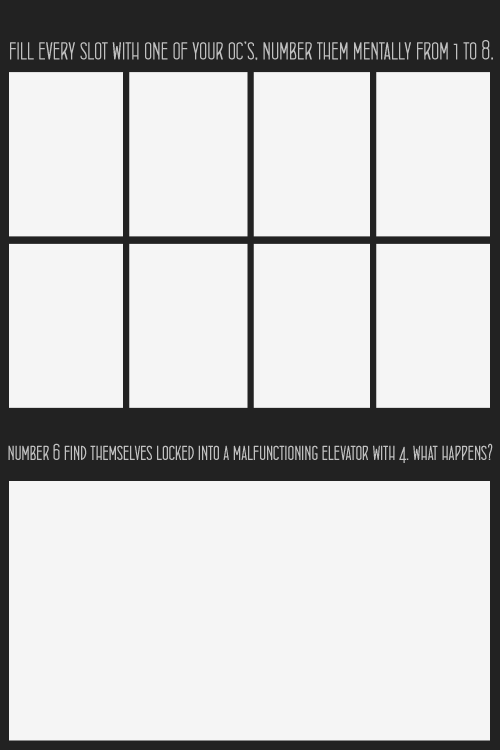
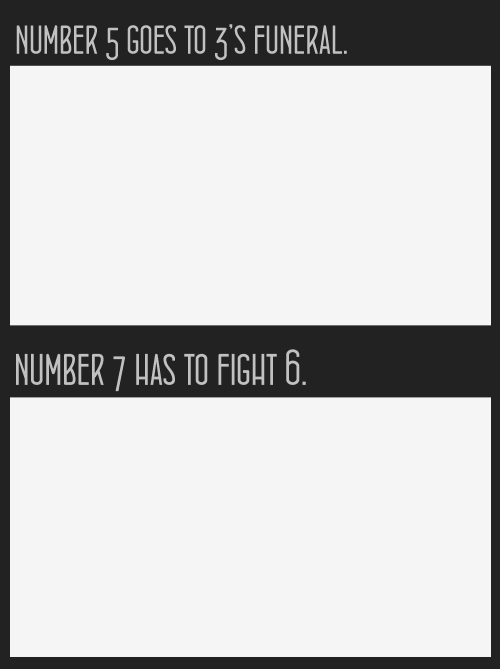
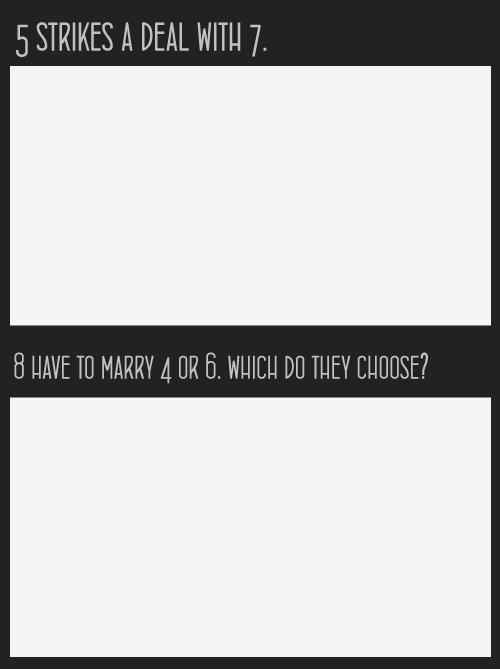
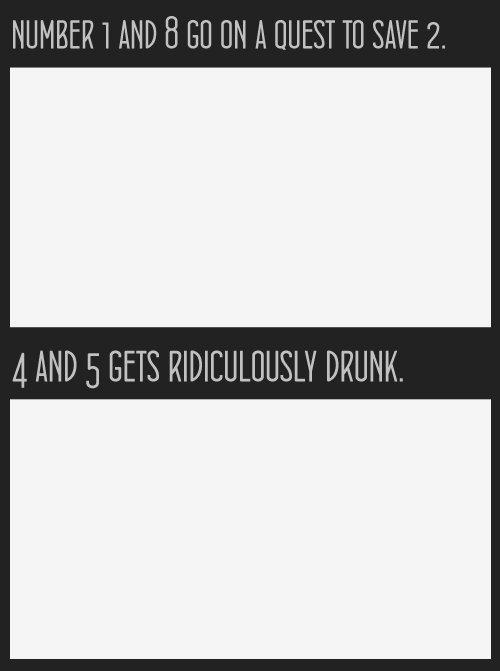
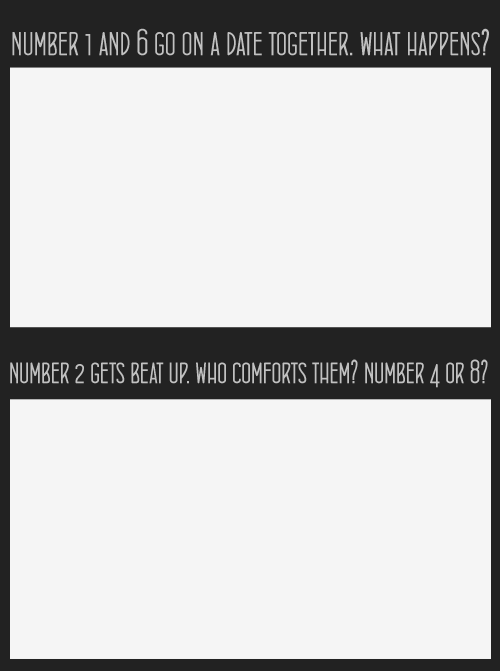
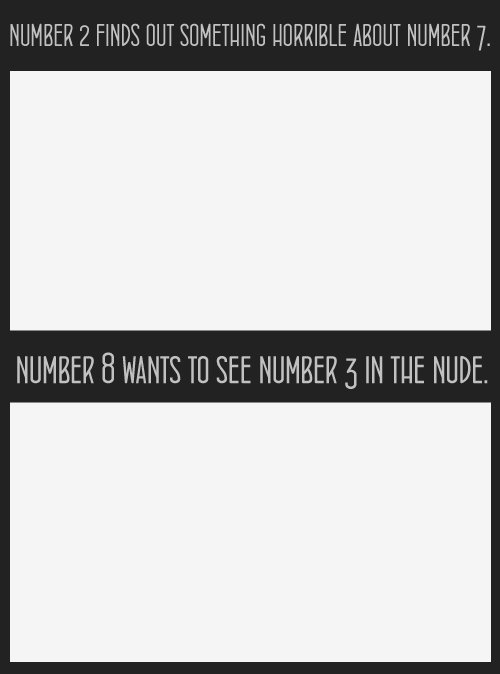
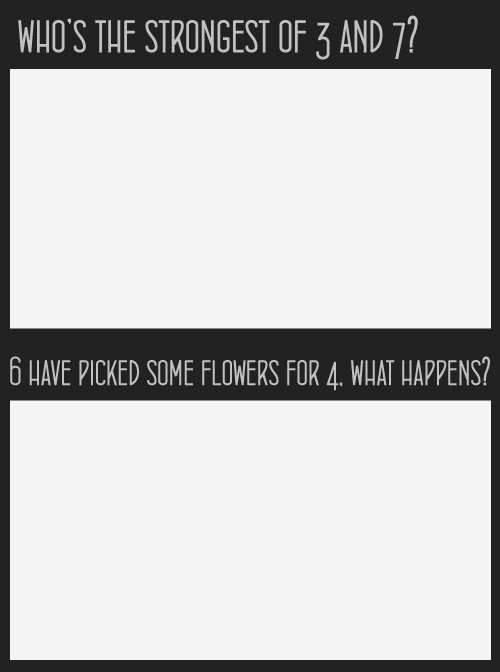
remember these, kids? they used to be so popular on deviantART way back in like 2008 and i remember i used to be so pumped about doing one, though i never really did. so, last night i even had a dream about doing one of these, so i put together some scenarios and here we are, haha! feel free to reblog or save the template for yourself if it catches your fancy!
please tag your finished meme as harteus meme so that i and others can find your artwork easily and collected. <3
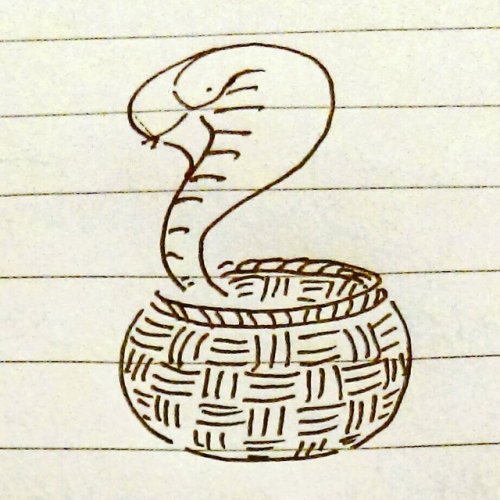

Hello friends, this is the long awaited tutorial on Line-Quality, Art-Style, and Same-Face-Syndrome.
Line-Quality is improved by building Muscle-Memory.
You build muscle memory through Drawing-Exercises.
Art-Style is developed over time through Observation and Routine.
Routines such as… Drawing-Exercises.
And now for… the Ultimate Drawing-Exercise-Routine!
It’s called Snake-In-A-Basket!!
Draw any kind of snake inside of any kind of basket. You have 5 to 20 minutes to complete it before each/every Big-Serious-Illustration to tackle. No more, no less time!
Draw it… NOW!

(my example that I drew in GIMP)
Art-Style is not necessarily what you think it is. A fairly common style issue discussed in artist circles is the inability to draw the same character twice while retaining their likeness or the lack of uniqueness which makes our art (recognizable) distinguishable from another’s “oh! YOU drew this!”.
Here are the fastest pathways to attaining the elusive Art-Style:
Repetition!!!!!
Recurrence-of-Thematic-Elements (everyone is sad, robots, someone is always shirtless, etc)
Same Color-Palette used for everything you draw
Same-Tools (line width, brush set, same paper, canvas size)
or Same-Program
(examples of palettes!! you can’t go wrong with having a rainbow)

Some Amount of Explanation:
If you draw on the same size or same scale (A6, A5, A4, A3 | B6, B5 | Letter) or in the same orientation (Landscape or Portrait), it helps you learn Composition intuitively by training you to make use of the space you have. Also it’s easier to print out and frame if you draw on common photo print sizes 4x6, 8x10, etc.
Even if you make a lot of use of Blend/Blur and you’re more of a Painter than a Cel-Shader– deciding to use a Set Personal-Default-Color-Palette instead of randomly choosing them on the Wheel/Triangle-Thing will still give you enough stable consistency.
Onto the next thing!
Same-Face-Syndrome is normally caused by one of two things. If it’s not one then it’s the other: Same Shapes or Same Details.
To make noticebly different characters you have to Exaggerate.


Circle, Square, Triangle, Rectangle? Short, Wide, Tall, Thin?
Before you try your hand at drawing any Face or Body Type, draw another Snake-In-A-Basket first.

You think I’m joking?
No. I’m not.

So to wrap up, you need to Warm Up to draw, you need to make a color palette and stick to it –or just use the same Crayola pencils, or the same kind of Bic pen, same kind of sharpie, .7 or .5, and have themes like “plaid flannels for everybody” or “hoodies and jeans”. Find those things you can execute consistently, like hatching or stippling, and if you like it, stick with it!
Hope this helps!
Now draw a SNAKE-IN-A-BASKET!


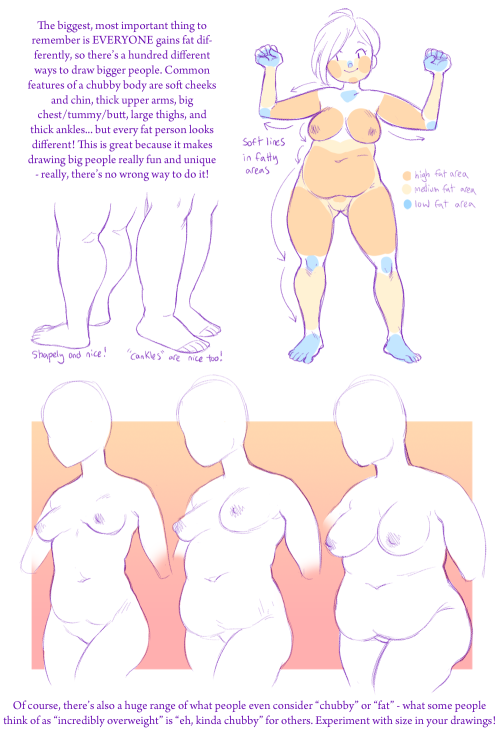
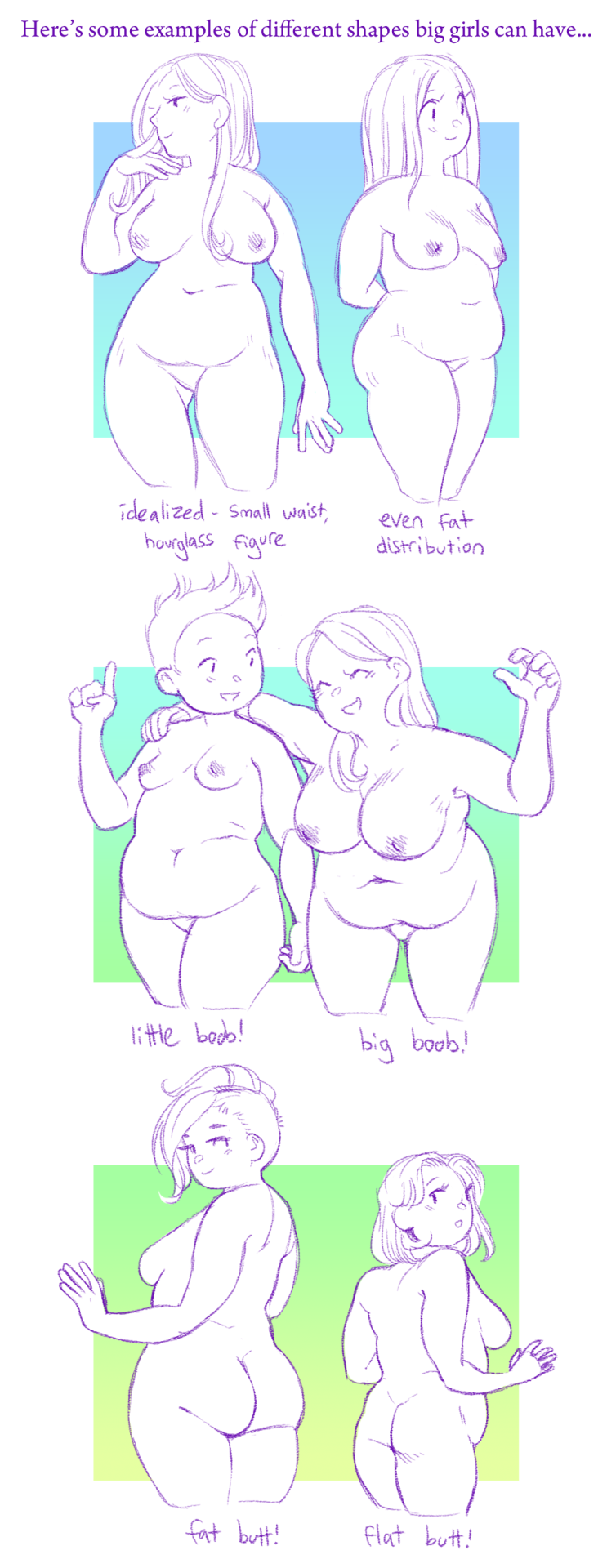

Thanks so much for your ask! I’ve meant to do a tutorial like this for a long time. This is the way that I draw big girls, though it’s quite a short and basic tutorial. I hope it helps!
the “area of gain” part was pretty much taken directly from -here-, a VERY informative and helpful tutorial. Here’s a couple of tutorials that I think are pretty good: link and link.
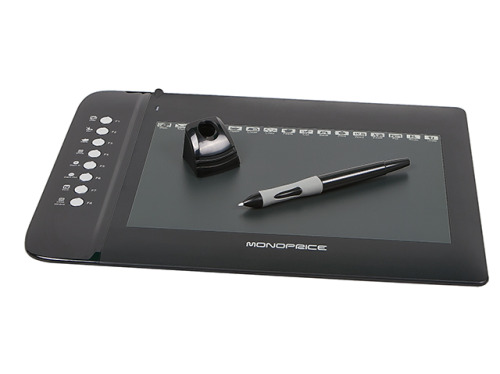
Ray Frenden reviews the too-cheap-to-be-true Monoprice graphics tablets. How do they stack up to industry standard Wacoms?
After spending a week with the 6.25“x10” Monoprice, my Yiynova and Cintiq remain unplugged and I gave my Intuos away to a friend. The Monoprice tracks subtle pressure variances and small movements with less lag and more crisp fidelity than any of the others. It is, put crudely, fucking awesome, in both OSX Lion and Windows 7 x64.